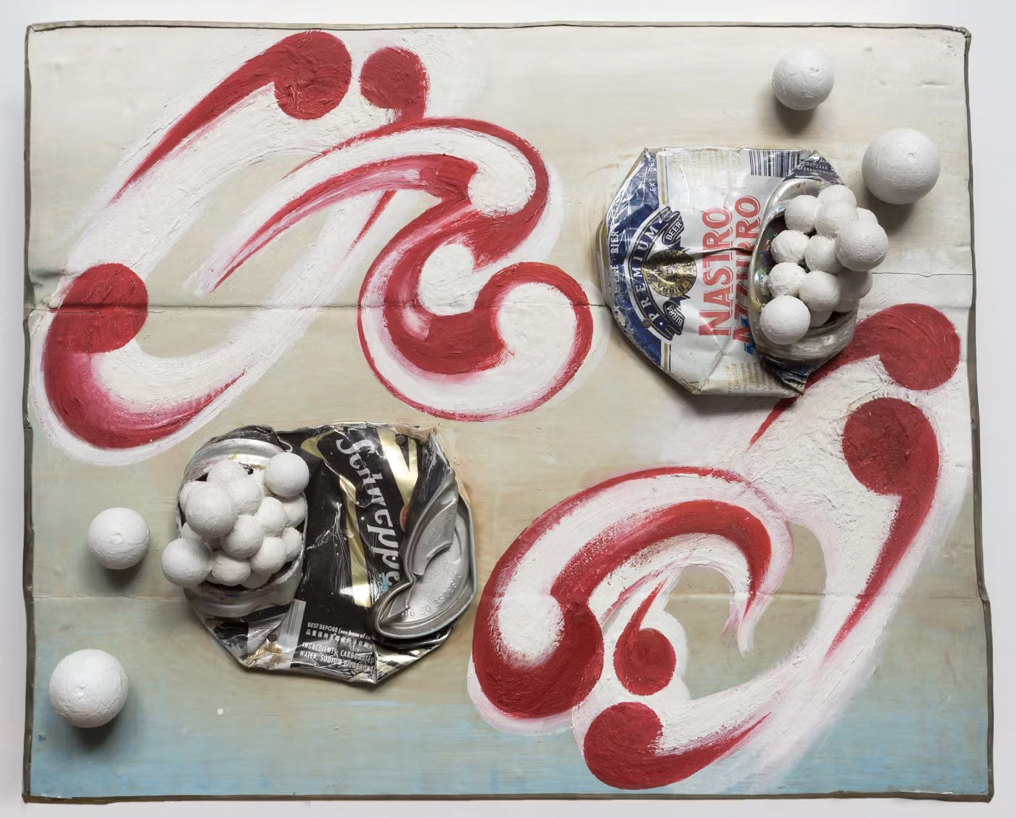For Alfredo Londaibere (Buenos Aires 1955-2017) painting could concentrate all the expressive capacity of an artist and all the truth about art. Painting represented its language, its economy and its field of action. He explored it from multiple perspectives through his different roles as an artist, curator and teacher, around a work system focused on the craft and at the same time on the history of art.
In his works, classical European art, primitive Christianity, colonial baroque painting, pagan, Catholic and Afro-descendant beliefs, central and peripheral modernisms, East and West, the avant-garde and local appropriations, the artisanal system and the scholarly arts, elite culture and popular consumption. Painting offered him a field of research that he explored through diverse techniques and materialities with which he revisited traditional genres and, at the same time, it became a tool to achieve a spiritual state that became increasingly explicit in its themes. , in their procedures and in their vision of the world. In his paintings, in his assemblages and in his collages he configured a way of doing that was meditative and focused on aesthetic enjoyment.
He trained in the workshops of Araceli Vázquez Málaga, Oscar Smöje and the Asociación Estímulo de Bellas Artes. Since the eighties he produced work systematically, in series. In 1985 he joined the Gay Action Group (GAG), with which he shared readings on social theory, micropolitical activism and a sociability that brought him closer to Jorge Gumier Maier and Marcelo Pombo. Towards the end of that decade he attended the work clinics of Luis Wells and Kenneth Kemble and Pablo Suárez, who encouraged him to direct his production towards collage.
Some of his works began to circulate in the Buenos Aires underground scene at that time: he participated in exhibitions at Cemento and at the Singapore Sling gallery. He was part of the group of artists linked to the art gallery of the Ricardo Rojas Cultural Center since Gumier Maier founded it in 1989. That year he presented there his first individual exhibition, Maps and Paintings, which he considered as a “ retrospective”. In 1991 he participated in the “Kuitca Scholarship”, directed by Guillermo Kuitca, of whom he would later be an assistant. That year he exhibited again at the Rojas and he also did so a third and final time the following year, when he also began teaching fine arts classes.
Together with Gumier, Omar Schiliro and Benito Laren he participated in 1992 in an exhibition at the Giesso space, where he exhibited a series of male nudes on boards, outlining an aesthetic loaded with meanings linked to sexuality. The critic Jorge López Anaya dedicated to the exhibition the review “The absurd and fiction in a notable exhibition”, published in La Nación, “in which he established an analogy between the works and certain contemporary symptoms associated with postmodernism such as light, fiction and levity. From then on, a controversy was generated about the notion of light associated with this group of artists and which was extended to all those who participated in the Rojas scene” –summarizes art historian Jimena Ferreiro–. In 1994 he had a solo show at the Mun Gallery, curated by Sonia Becce. In 1996 he exhibited with Benito Laren at the Institute of Ibero-American Cooperation (ICI). That same year he was selected to participate in the Barracas Workshop with the support of Antorchas and under the direction of Luis Benedit and Pablo Suarez. Curated by Becce, he presented his series “10 Crowns of Power” at the Alliance Française in 1998. In 1999 he exhibited Autobiographical Tempera Paintings at Galería Gara. In 2000 and 2002 he held exhibitions at Belleza y Felicidad, the art gallery, bookstore and neighborhood cultural center founded by Fernanda Laguna and Cecilia Pavón, “who became the natural heir to Rojas” (Ferreiro). At the Rojas Center, meanwhile, he took charge of the management of the exhibition space when Gumier decided to step away from management from 1997 to 2002.
He studied ceramic and wax modeling in the workshops of Carlos Kurten, Antonio Pujía and Taca Oliva. He produced sculptures, which he exhibited in 2005 alongside paintings by Florencia Bohtlingk at the Borges Cultural Center, in an exhibition curated by Fernanda Laguna. These works accompanied his work from the early 2000s, a period in which Ferreiro observed the predominance of “a more direct gesture”, works with which the artist felt that he was beginning to paint for the first time.
Among numerous other exhibitions, his participation stands out with a series of tempera paintings on lithographs and photographs in the cycle “The artist as curator”, at the San Martín Cultural Center, invited by Laura Batkis, and in the collective exhibition 2D (both, 2005). , curated by María Eugenia Spinelli at the Parque de España Cultural Center in Rosario. He also exhibited at the Recoleta Cultural Center, Ivy Marey / Tierra sin Mal (2009); in the Hidden Garden Gallery, Flowers and fruits (2012) and in Gallery Nora Fisch, Paintings and collages (2015). In 2015, Londaibere was awarded the First Prize for Painting from the Central Bank of the Argentine Republic, the First Prize from the Andreani Foundation and the Second Prize from the 10th UADE National Contest of Visual Arts.
In 2019, Jimena Ferreiro curated Yo soy santo, the first panoramic exhibition of her work, for the Museum of Modern Art of Buenos Aires. The same year, the Nora Fisch Gallery dedicated the exhibition Welcome Spring to him and in 2022 it organized the Londaibere Collection / The artist as curator, a two-stage exhibition with works from the artist’s personal collection, which was also curated by Ferreiro and which covered early and iconic pieces from the production of several of the artists of his generation and the Rojas circle.


 Londaibere Alfredo
Londaibere Alfredo